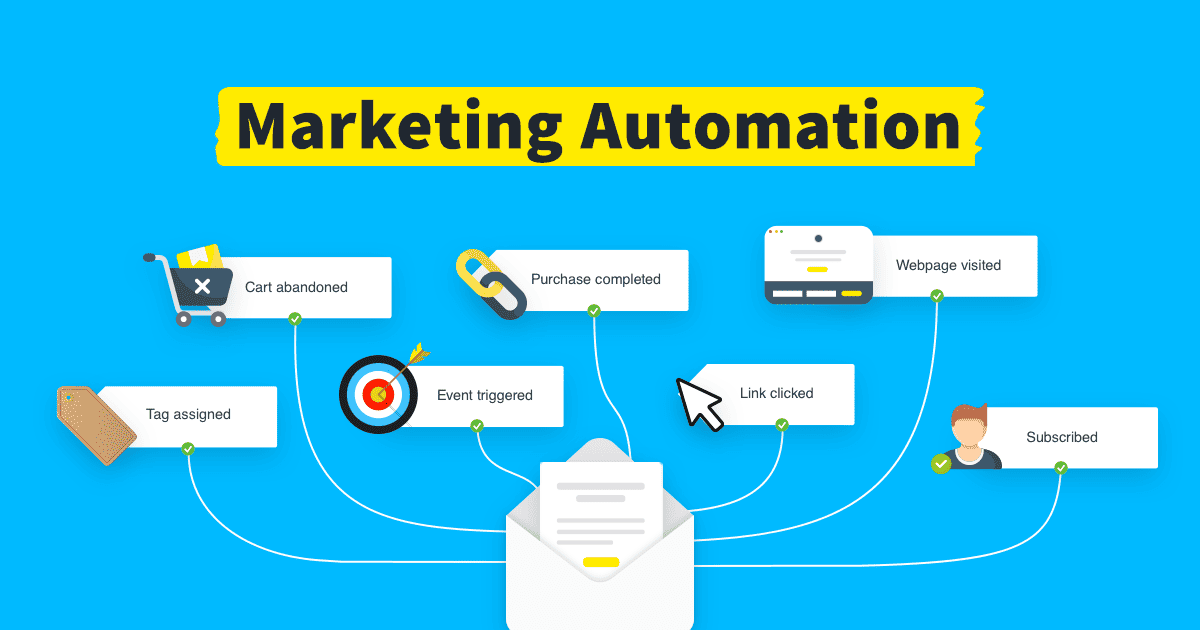Marketing automation has gone from a “nice-to-have” to a must-have in 2025. With customers expecting personalized experiences across multiple channels — and businesses managing more campaigns than ever — automation is the only way to scale without burning out your team.
From automated email sequences to AI-powered ad optimization, marketing automation helps you reach the right people, at the right time, with the right message — all while freeing up your time for strategy and creativity.
This guide will explain what marketing automation is, why it matters in 2025, the best tools to use, and how to implement it successfully.
What Is Marketing Automation?
Marketing automation is the use of software and technology to streamline, automate, and measure marketing tasks and workflows.
Instead of manually sending every email, posting every update, or managing every ad campaign, you set up automated systems to handle them based on rules, triggers, or AI predictions.
Why Marketing Automation Matters in 2025
- Time Efficiency – Automation handles repetitive tasks so you can focus on strategy.
- Consistency – Ensures your brand message is delivered regularly across all channels.
- Personalization at Scale – Delivers tailored content to thousands of customers automatically.
- Improved ROI – Automation reduces wasted ad spend and increases conversions.
- Data-Driven Decisions – Automated systems collect and analyze performance data in real time.
Core Areas of Marketing Automation
1. Email Marketing Automation
- Automated welcome sequences.
- Abandoned cart reminders.
- Birthday and anniversary campaigns.
- Re-engagement emails for inactive users.
Example Tools: Mailchimp, ActiveCampaign, Klaviyo.
2. Social Media Automation
- Schedule posts weeks in advance.
- Auto-post to multiple platforms.
- AI-suggested hashtags and captions.
Example Tools: Buffer, Later, Hootsuite.
3. Paid Ads Automation
- AI adjusts bids and targeting in real time.
- Dynamic ad creatives based on audience behavior.
Example Tools: Google Ads Smart Bidding, AdCreative.ai, Revealbot.
4. Lead Nurturing & Scoring
- Automatically send content based on where leads are in the sales funnel.
- Score leads based on engagement and likelihood to convert.
Example Tools: HubSpot, Marketo.
5. CRM & Sales Automation
- Auto-log interactions.
- Trigger sales follow-ups when leads show buying intent.
Example Tools: Salesforce, Zoho CRM.
Steps to Implement Marketing Automation in 2025
- Set Clear Goals – Define what you want (e.g., more leads, higher sales, reduced churn).
- Choose the Right Tools – Match features to your business needs.
- Map the Customer Journey – Understand all touchpoints from awareness to purchase.
- Create Segmented Workflows – Different automation paths for different customer types.
- Test and Optimize – Regularly refine based on performance data.
Trends in Marketing Automation for 2025
- AI-First Automation – Predictive analytics and personalization.
- Cross-Channel Journeys – Seamless experiences across email, SMS, social, and ads.
- Voice and Chatbot Automation – AI assistants for customer support and sales.
- Hyper-Personalization – One-to-one marketing at scale.
- Privacy-Focused Automation – Compliant with stricter data regulations.
Benefits of Marketing Automation
- Saves time and labor costs.
- Increases engagement and conversions.
- Improves customer retention.
- Provides detailed analytics for decision-making.
Common Mistakes to Avoid
- Automating without a clear strategy.
- Overloading customers with automated messages.
- Ignoring personalization.
- Not reviewing automation flows regularly.
Conclusion
In 2025, marketing automation is essential for staying competitive. By combining the right tools, smart workflows, and AI-powered personalization, businesses can scale their marketing without sacrificing quality or customer experience.

